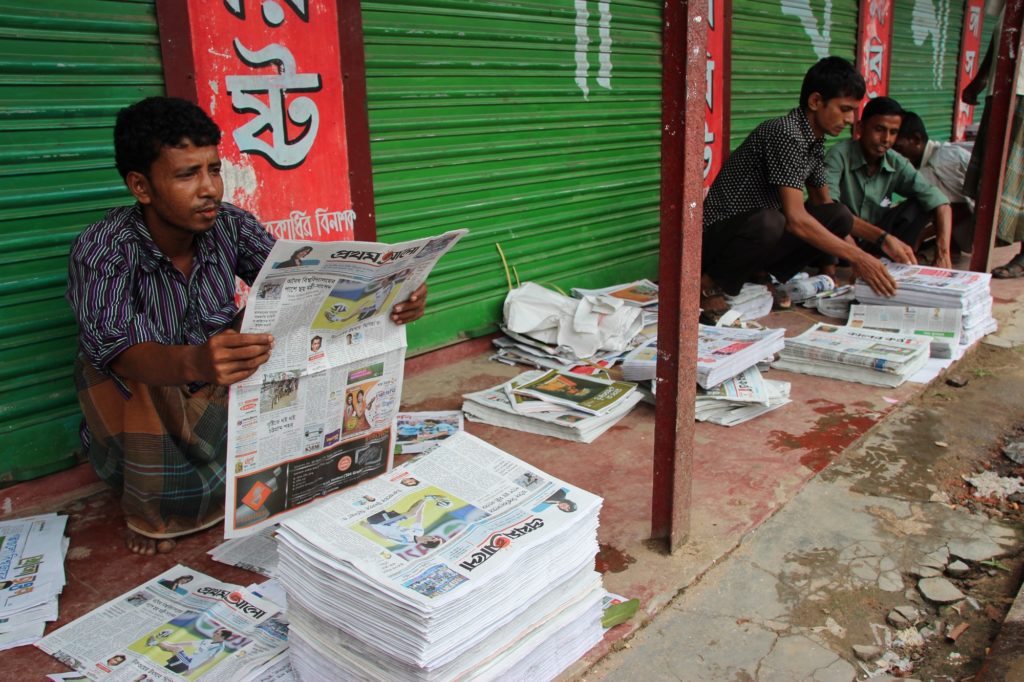Independent media around the world are struggling to continue their existence and remain independent. The changing media market, a decline in the trust in media, government interference in the working of media, or attacks on journalists are all affecting the ability of media outlets to earn revenue and conduct independent reporting. ‘Media viability’ refers to all factors that influence the (continued) existence of independent media outlets.
The resource guide contains information on what media viability is in general, as well as on media viability issues that are inside the direct sphere of influence of media outlets. The concept media viability is however much broader than this. To navigate quickly to the sections of your interest, please consult the navigator below.

An introduction to media viability: the definition and framework used to approach media viability in this resource guide as well as a summary of the current viability of the media sector.

What Can a Media Outlet Do to Boost its Viability?
In this section you find information on the factors that are in the sphere of influence of media outlets. Here the focus is on best practices that arise from the research on a media business’ operating model, business model, relationship with the audience and quality of content. Also, this section summarises the research conducted by Free Press Unlimited on the income models of media in challenging environments.

Lots of practical information that can help media with the development of their business models, including links to accelerators and media labs around the world, guides and toolkits, and also more information about Roadmap for Media Growth – Free Press Unlimited’s toolkit for business model development.
Evidence base: Media viability
| Source | Year | Country | Organisation | Author |
|---|---|---|---|---|
| Radios in the post-pandemic world – tools and strategies to confront the new normal | 2020 | Latin America | Deutsche Welle Akademie | Binder, I. & Gago, S. |
| Donor Aid and Private Investment: Their Interplay With Media Development | 2020 | Africa | Nyarko, J. et al. | |
| Policy Brief: Impact of COVID-19 on the Media | 2020 | Global | Free Press Unlimited | Nijhof, S. |
| Digital News Report 2020 | 2020 | Global | Reuters Institute | Newman, N. et al. |
| Local Radio Stations in Africa Prove Resilient Amid COVID-19 | 2020 | Uganda, Zimbabwe | Center for International Media Assistance (CIMA) | Myers, M. et al. |
| Few Winners, Many Losers: the COVID-19 Pandemic’s Dramatic and Unequal Impact on Independent News Media | 2020 | Global | Reuters Institute & University of Oxford | Kleis Nielsen, R. et al. |
| Crisis and Opportunity: How Independent Media Can Learn from the Pandemic | 2020 | Global | Open Society Foundations | Robinson, J.J. |
| Evaluation Media Incubator for the Western Balkans Pilot Project | 2020 | Kosovo, Serbia | Free Press Unlimited | Kahrmann, I. |
| Supporting Local Journalism in the Age of Covid-19 | 2020 | United States of America | Radcliffe, D. | |
| Media Turn to Engagement and Creativity to Confront COVID Crisis | 2020 | Global | Media Development Investment Fund (MDIF) | Media Development Investment Fund (MDIF) |
| Myanmar’s Media Response to COVID-19: A Media Development Investment Fund (MDIF) Survey | 2020 | Myanmar | Media Development Investment Fund (MDIF) | Media Development Investment Fund (MDIF) |
| Central African Republic: Coronavirus and the Media | 2020 | Central African Republic | European Journalism Observatory | Leroy, M. |
